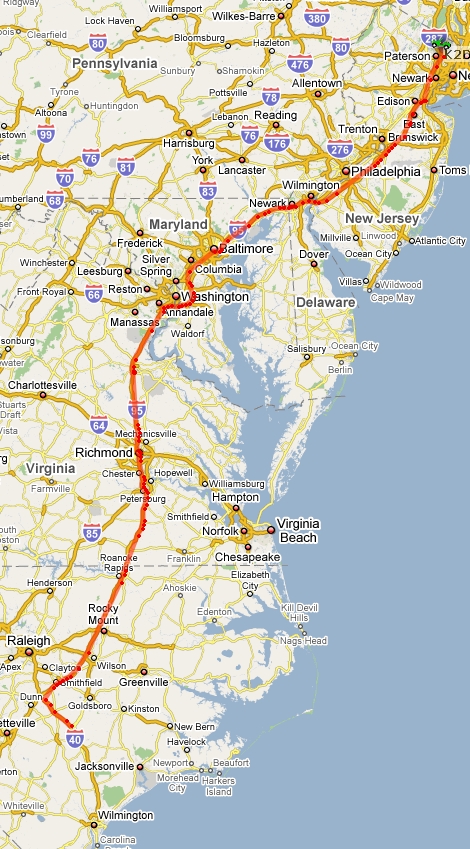Here’s a screen shot from APRS.fi of my APRS track from Wilmington, NC to my home QTH in Northern NJ. I use a Garmin GPS76CS connected to my Kenwood TH-D7A(G) handheld and plugged into a Mirage dual-band amplifier. I’ve used this setup a few times on this same trip when going to visit my in-laws. I have the radio station id as K2DSL-7. Here’s the map…

You’ll see a very large gap at the bottom portion between where the track ends and Wilmington which is shown at the bottom of the map above. It’s a APRS dead spot. I almost never get anything between that last end point and Wilmington. Otherwise, the track is pretty accurate for the route which is primarily Rt 17 in Northern NJ to the Garden State Parkway, New Jersey Turnpike and then I-95 south to I-40 in North Carolina which is the ride (a few different names as it gets into Wilmington) my in-laws live off of.
I usually leave Band A on APRS with a 2 minute interval. Band B I leave on 146.52 which is the national 2-meter simplex frequency. I usually don’t hear more then 2 or 3 people on that frequency during the 650 mile trip. The map above is the route home and the map from NJ to NC from 5 days earlier is very similar. APRS.fi shows 32 stations reporting hearing me direct ranging from a few miles away from my broadcast location at the time I was heard to over 115 miles away. Most are in the 30-50 mile range from my location.
APRS.fi reports 100 packets received for today’s trip home and 127 for the trip down last Tues night/Weds morning. Without analyzing why, I’d guess the number difference it was the length of the trip down on Tues vs home on Mon. Tues/Wednesday’s ride was very long with a lot of traffic. It took about 12.5 hours to get there (arriving just before 2am). Today it was smooth sailing and we did the trip in 9.5 hours. If I look, I see about the same gaps on the map between the 2 trips. We need some more igates (computers connected to tranceivers that get APRS packets via RF and push them onto the Internet) along I-95 and I-40 in North Carolina.
On a completely different subject, the FCC ULS is now showing my license class as Extra. QRZ should follow in a day or two the upgrade.
73,
K2DSL